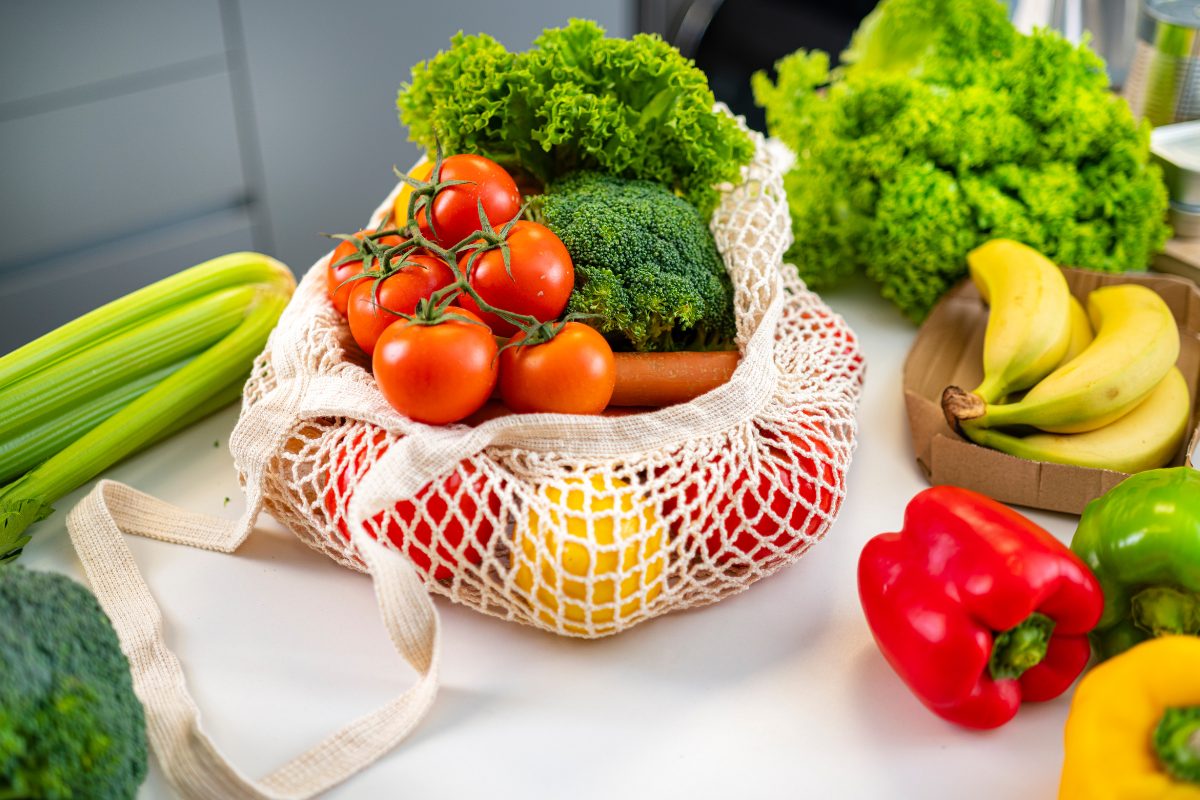Selecting and Storing Fresh Produce
International Food Information Council (IFIC)
August 29, 2023

Incorporating fresh produce into the food you serve can be a great practice, but it’s important that you know how to properly store different types of produce. Our partners at the International Food Information Council (IFIC) have tips on how to select and store fresh produce so they stay good longer and don’t go to waste.
Blog adapted from IFIC
Reducing spoilage: The basics
The most important factors to consider in maximizing our produce’s shelf life are: the condition of the produce when it’s purchased, the temperature at which the produce needs to be stored, the humidity and airflow levels of the storage space, and whether or not the food produces ethylene gas or is ethylene-sensitive. Ethylene gas causes produce to ripen and spoil more quickly, so ethylene-sensitive produce are especially prone to ripening and spoiling prematurely.
Not sure whether or not your favorite fruits and vegetables are ethylene-producing or ethylene-sensitive? Don’t worry, we’ve got you covered—and have tips for how to store them!
Apples, peaches, and pears
Choose firm apples, peaches, and pears without apparent bruising. Apples fare best when stored in a plastic bag or airtight container inside the refrigerator. Because they release ethylene gas, it’s best to keep apples stored in a bag or container inside a drawer that contains other non-ethylene-sensitive fruits, such as strawberries, blueberries, and raspberries. Apples will last for several weeks if stored properly. Underripe pears and peaches should be stored outside the fridge, in an open and easily accessible place like the kitchen counter, at room temperature until they are ripe, at which point they can be moved to the refrigerator but stored away from ethylene-sensitive produce, since they also produce ethylene gas. Pears can last up to two weeks and peaches usually last about a week.
Asparagus and celery
Choose firm asparagus and celery, with rich color and without apparent bruising. For asparagus, trim the bottoms and place the asparagus bottoms down in a glass with about an inch of water in it. Cover the glass with a plastic bag but do not tightly seal it; then, place the asparagus in the refrigerator, where it can live for up to a week (note that asparagus is ethylene-sensitive, so store it away from ethylene-producing produce). Celery stalks should remain whole, removed from any plastic bags they may have been purchased in, and kept in an aluminum-foil wrap (but not wrapped too tightly!). Celery produces ethylene, so it does best in the crisper drawer, set to high humidity; stored properly, it can last up to a few weeks.
Avocados
Choose your avocados based on when you plan to eat them. If you’re looking for ripe avocados, use your hands to gauge their firmness. Ripe avocados are closer to black in color and will give slightly when squeezed. If you’re planning to eat avocados later in the week, choose a hard, green avocado and store in a paper bag for a of couple days on the counter until it’s ripe. Store ripe avocados in the fridge to extend their shelf life, or on the counter if you plan to eat them within a day or two. Note that avocados are ethylene-producers.
Berries
Choose berries that appear firm, bright in color, and without apparent bruising or mold. Blueberries, blackberries, and strawberries should be stored in a low-humidity section of the refrigerator, in a container with some ventilation. Berries hate mold; a quick one-minute vinegar bath can help remove any potential mold and extend the shelf life of blueberries, blackberries, and strawberries. After the vinegar bath, be sure to rinse the berries with water and thoroughly dry them (because berries hate moisture too) before storing in the refrigerator. Raspberries should be stored like other berries, but instead of the vinegar rinse, they can be washed with plain water right before consuming.
Broccoli, cauliflower, and cabbage
Choose broccoli, cauliflower, and cabbage heads that are firm, not wet or moist, and do not have apparent bruising. These types of produce should be refrigerated; uncut heads of cabbage can be refrigerated without a bag or container, but cut heads should be in an airtight container or bag. Broccoli and cauliflower should be refrigerated in a sealed container from the start. All these vegetables are ethylene-sensitive, so keep them away from ethylene-producing produce like onions, bananas, and apples, and pears. Broccoli and cauliflower can last up to two weeks in the refrigerator, while cabbage can last up to three weeks.
Citrus fruit (orange varieties, grapefruit, lemons, and limes)
Choose citrus fruit that appears firm and without apparent bruising or dents. Citrus fruits can be stored at room temperature for about a week and can be refrigerated after that to extend their shelf life. Oranges and grapefruits are not ethylene-sensitive, but lemons and limes are, so keep those away from ethylene-producers.
Cucumbers, zucchini, and squash
Choose cucumbers, zucchini, and squash that are firm, not wet or overly moist, and without apparent bruising. All of these vegetables should be refrigerated and not washed until ready to eat. Cucumbers, zucchini, and squash are ethylene-sensitive and should be stored away from ethylene-producers. They all prefer the high-humidity part of the fridge and can last one to two weeks when stored properly.
Garlic, shallots, and onions
Choose garlic, shallots, and onions that are firm, with little-to-no blemishes and dry outer skin. Garlic, shallots, and onions should not be refrigerated. Instead, store them in a cool, dark place with lots of air circulation. Although they may be purchased in plastic perforated bags, it’s best to discard those and store this kind of produce in a container without a lid. All should be stored in low humidity, away from potatoes and other ethylene-sensitive produce, since they produce ethylene gas. Garlic will last about three weeks, and properly stored shallots and onions may last up to a couple of months. Once cut, store leftover garlic, shallots, and onions in a plastic wrap or airtight container in the refrigerator.
Leafy greens
Choose leafy greens that do not appear wilted or wet. Excess moisture will cause greens to wilt sooner, so store them unwashed in the refrigerator until ready to use. Greens should be stored in an airtight container or plastic bag that zips. Despite how well you store your greens, some simply last longer than others. Romaine lettuce and green leaf lettuce can keep for up to a week, while kale, endive, escarole, and iceberg lettuces can last longer.
Sweet potatoes and potatoes
Choose sweet potatoes and potatoes that have minimal to no bruising and appear firm. Potatoes should not be refrigerated. Instead, they should be stored in a cool, dark place with high humidity and air circulation. If your potatoes were purchased in a perforated bag, it’s best to remove them and store them in a container without a lid. At warmer temperatures, potatoes sprout and spoil. At refrigerator temperatures, some of the starch converts to sugar, which makes the potatoes brown too quickly. Make sure to separate potatoes from ethylene-producing foods, since potatoes are ethylene-sensitive. Potatoes typically last a week or so longer than sweet potatoes, which last about one to two weeks.
Tomatoes
Choose tomatoes that appear firm, bright in color, and without bruising. If underripe, tomatoes can be stored at room temperature and will continue to ripen if near sunlight. Once ripe, tomatoes are best eaten at room temperature, but they can be stored in the refrigerator to extend their shelf life. Tomatoes are moderately ethylene-producing, so they are best stored away from ethylene-sensitive produce. Depending on where tomatoes are in the ripening process, they can last one to two weeks.
